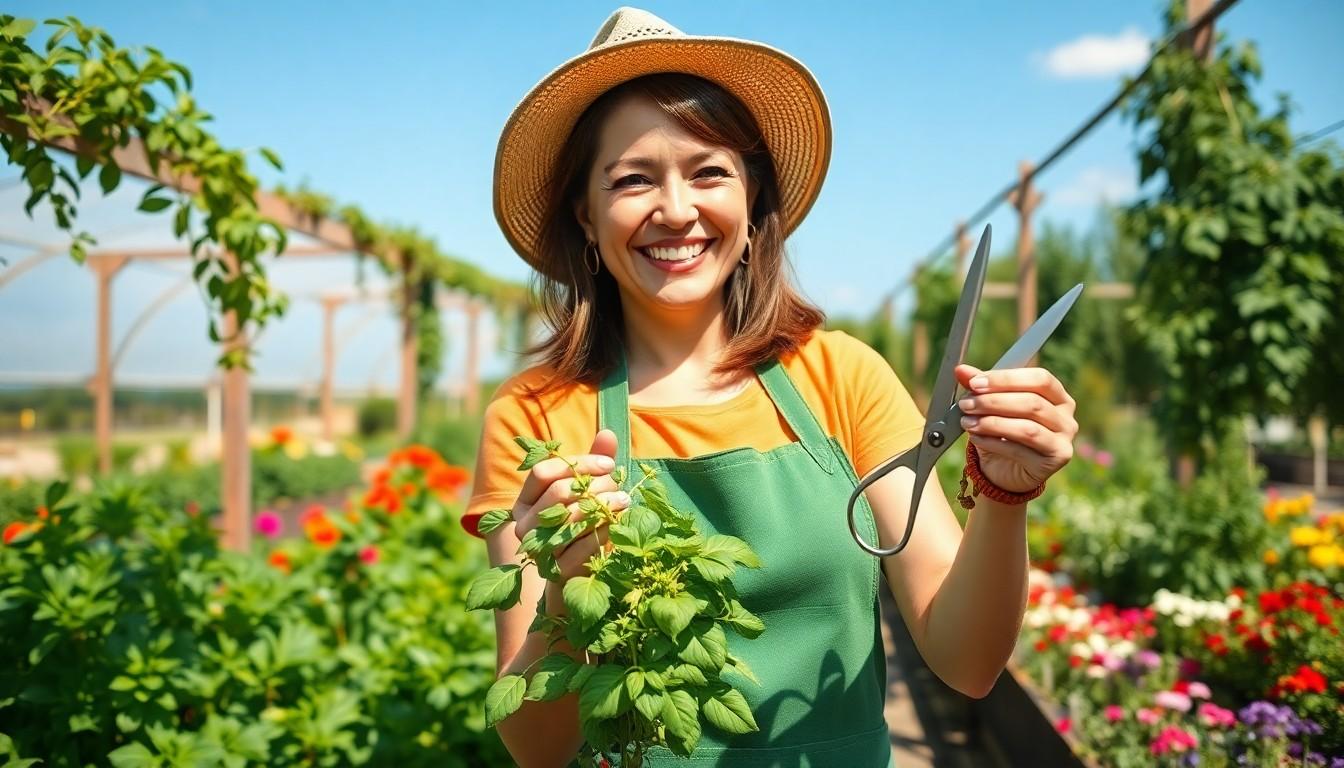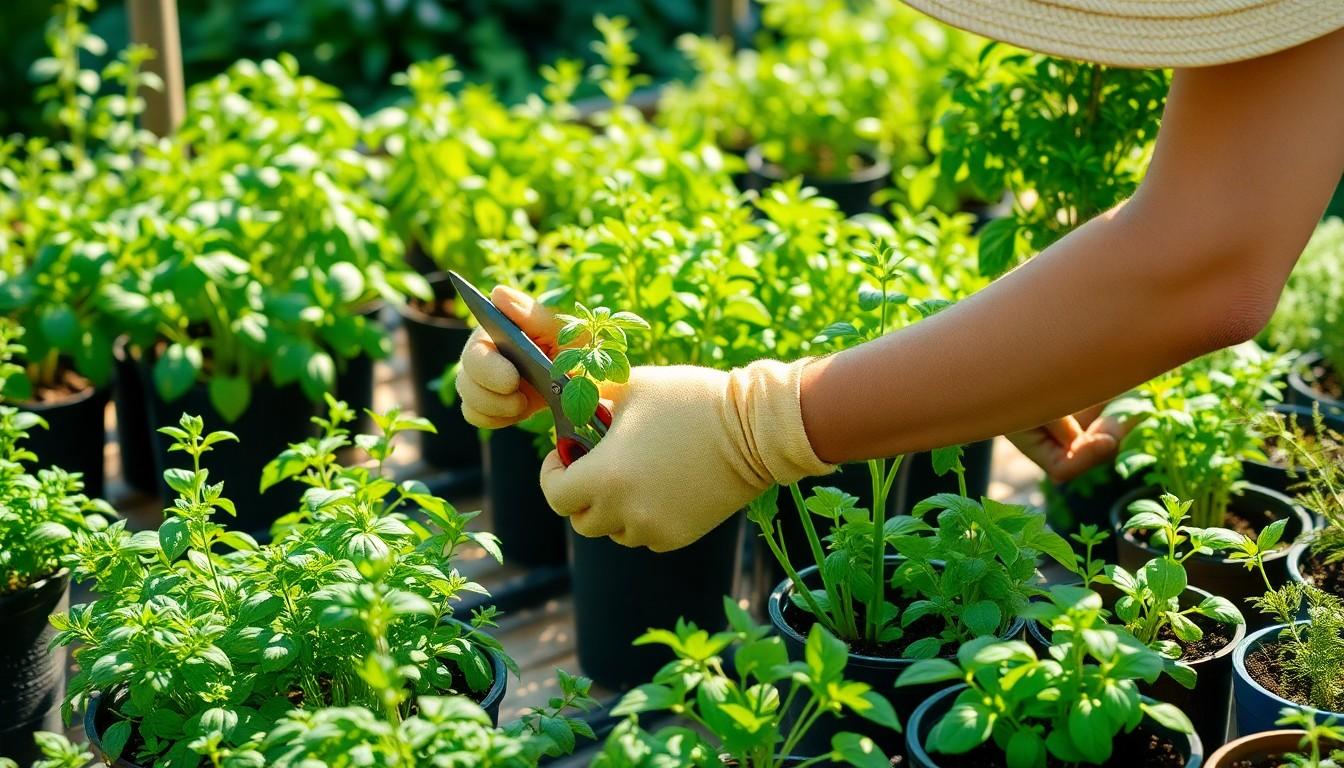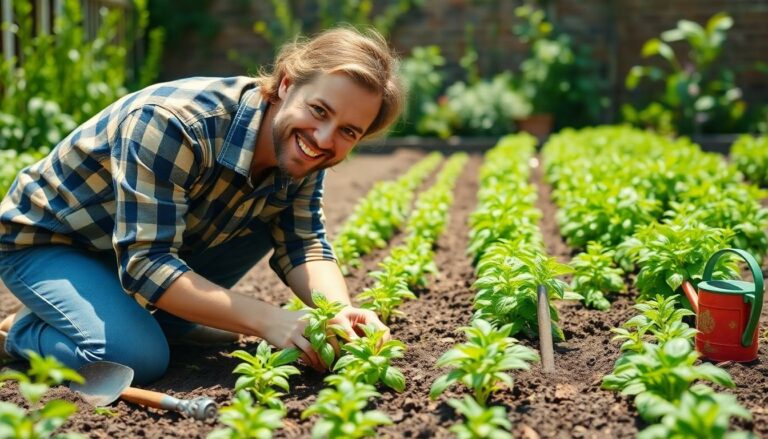How to Harvest Herbs: Unlock the Secrets to Flavorful Cooking and Thriving Plants

Imagine stepping into your garden, the sun shining down, and the air filled with the delightful aroma of fresh herbs. Harvesting herbs isn’t just a chore; it’s like a mini adventure where you become the hero of your culinary quests. Whether you’re aiming to impress dinner guests or simply elevate your morning omelet, knowing how to harvest herbs properly can make all the difference.
But wait! Before you dive in like a kid in a candy store, there’s a method to this madness. With the right techniques, you’ll ensure your herbs thrive while enjoying a bountiful harvest. So grab your shears and let’s explore the art of herb harvesting—where every snip brings you one step closer to culinary greatness and a garden that keeps on giving.
How to Harvest Herbs
Harvesting herbs requires knowledge about timing and tools for the best results. Following the right practices enhances flavor and encourages healthy growth.
Importance of Timing
Harvest timing significantly affects herb quality and yield. Herbs generally reach peak flavor just before flowering. Choosing to harvest early in the morning ensures oils are concentrated, resulting in vibrant, aromatic leaves. Monitoring growth stages allows for optimum harvesting dates. For instance, basil thrives when harvested every four to six weeks, promoting bushier plants. Speedy harvesting before seed formation helps maintain plant vitality. Timing contributes to maximizing the herb’s flavor profile, making it essential for every gardener.
Proper Tools for Harvesting
Selecting the correct tools simplifies the harvesting process. Sharp scissors or garden shears provide clean cuts, reducing plant stress and preventing damage. Harvesting containers, like wicker baskets or cloth bags, are ideal for transporting herbs without bruising. Gloves protect hands from sap and slippery herbs, especially in sticky conditions. Labeling tools, such as plant markers or tags, assists in identifying and organizing harvested herbs. Ensuring tool cleanliness prevents disease transmission among plants. Regular maintenance of tools contributes to their longevity, ensuring successful harvests year after year.
Best Practices for Harvesting Herbs

Proper techniques ensure a successful harvest. Different herbs require tailored approaches for optimal results.
Techniques for Different Types of Herbs
Basil benefits from cutting just above a leaf node, promoting bushy growth. Oregano thrives with regular trimming; cutting stems encourages new shoots. Mint prefers harvesting leaf tops to maintain its vigorous growth habit. For woody perennials like rosemary and thyme, shearing 25-30% of the plant stimulates health. Focusing on timing ensures robust flavors; harvest before flowering for the best taste.
Tips for Maintaining Flavor and Aroma
Harvesting early in the day enhances flavor as essential oils are more concentrated. Using clean, sharp scissors or pruners prevents bruising and maintains plant health. Storing herbs in a cool, dark area preserves aroma longer. Washing harvested herbs before storage can diminish oils; instead, gently brush off dirt. Regularly using herbs encourages continuous growth; taking small quantities rather than large cuts keeps plants thriving.
Post-Harvest Handling
Post-harvest handling of herbs is crucial for maintaining flavor and quality. Proper techniques ensure the best culinary experience.
Cleaning and Storing Herbs
Cleaning herbs involves gently brushing off dirt rather than washing them. Washing introduces excess moisture, which can lead to spoilage. Storage should occur in a cool, dark place, ideally in breathable containers like paper bags or wrapped in damp paper towels. Maintaining moisture balance prevents wilting while allowing airflow. Refrigeration can prolong freshness, but only for herbs that tolerate cooler temperatures, such as parsley or cilantro. Optimal storage conditions enhance aroma and flavor, ensuring herbs remain vibrant and usable for meals.
Drying and Preserving Methods
Drying methods preserve herbs effectively, with air drying being the simplest approach. Hanging bunches in a warm, dry environment protects flavor and aroma. Alternatively, an oven or dehydrator can expedite the process, but lower heat settings are vital to retain essential oils. Freezing offers another preservation option, where herbs can be chopped and placed in ice cube trays with water or oil. This technique locks in flavor for easy future use. Vacuum sealing extends shelf life significantly, while jars with tight-fitting lids safeguard dried herbs from moisture and light exposure.
Common Mistakes to Avoid
Harvesting herbs involves potential pitfalls that can affect future yields and plant health. Recognizing these common mistakes leads to better practices and more fruitful results.
Overharvesting Concerns
Overharvesting can undermine the growth and longevity of herb plants. Taking more than 30 percent of the plant’s foliage at once risks stunting its future growth. Regularly cutting smaller amounts encourages bushier plants and continuous production. Signs of overharvesting include wilting or yellowing leaves, indicating stress that can lead to plant decline. To prevent overharvesting, establish a consistent routine and only take what’s necessary for immediate use.
Inappropriate Harvesting Techniques
Using improper techniques can damage the plant and reduce productivity. Cutting leaves too close to the stem can hinder regrowth, while tearing leaves causes bruising and promotes disease. Ensure sharp, clean tools are used to make quick cuts, delivering clean wounds that heal faster. For some herbs, like basil, cutting above leaf nodes stimulates new growth and fullness. Avoid working in wet conditions, as moisture increases disease risk, especially with delicate herbs.
Harvesting Herbs
Harvesting herbs is an enriching experience that not only enhances culinary endeavors but also nurtures a thriving garden. By employing the right techniques and timing, individuals can maximize flavor while ensuring the health of their plants. Regular harvesting encourages bushier growth and a continuous supply of fresh herbs.
Proper post-harvest handling and storage play a crucial role in maintaining the quality and aroma of the herbs. With mindful practices in place, anyone can enjoy the benefits of homegrown herbs while avoiding common pitfalls. Embracing this rewarding journey can lead to culinary creativity and a deeper connection to gardening.



